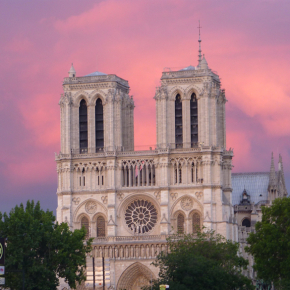
Notre-Dame de Paris: the CNRS has launched a project to coordinate research
A month after the fire at Notre-Dame Cathedral in Paris, the Chairman and CEO of the CNRS, Antoine Petit, has just entrusted a researcher with the coordination, for the CNRS, of the "Notre-Dame scientific project". The objective is to develop lines of research relating to Notre-Dame de Paris cathedral, such as materials or modeling, while initiating new modes of exchange between scientists from different fields.
In the wake of the tragedy that struck Notre-Dame de Paris Cathedral, research began to take form at the CNRS. Martine Regert, Deputy Scientific Director of the CNRS Institute of Ecology and Environment, and Philippe Dillmann, CNRS Senior Researcher at l’Institut de recherche sur les archéomatériaux (CNRS/Université de Technologie Belfort-Montbéliard/Université d'Orléans/Université Bordeaux Montaigne), were recently appointed by CNRS President and CEO Antoine Petit as leaders of the “Notre-Dame scientific project.”
This initiative grew out of a need that emerged immediately after the Notre-Dame fire, namely that the growing number of research topics connected to the cathedral required an overall framework to coordinate the various initiatives. The Notre-Dame scientific project will connect research teams working in different scientific fields, identify conservation and restoration needs in terms of science and technology, and develop studies in broader topics relating to the monument as well as how the event was felt within society. This entails working with the various institutions involved, such as the Ministry of Culture, as well as the Association des scientifiques pour la restauration de Notre-Dame (Association of Scientists for the Restoration of Notre-Dame).
Ms. Regert and Mr. Dillmann have begun taking stock of the scientific studies that already exist at the CNRS on Notre-Dame and other gothic monuments. Over 50 researchers have come forward, and will soon begin work on the four primary research focuses: modelization and digital data, wood and structure, materials (lead, stone…), and anthropology (to study how the population experienced the fire and its consequences, for instance).
The leaders of the Notre-Dame scientific project hope that these new interfaces for exchange will lead to original kinds of interdisciplinary cooperation, which could ultimately prove valuable to research conducted on other monuments.


